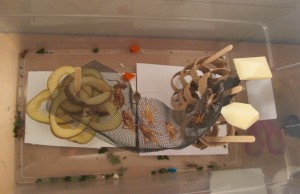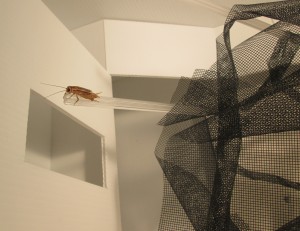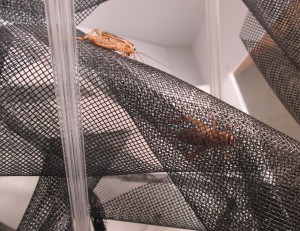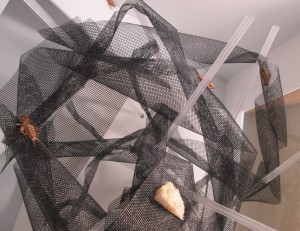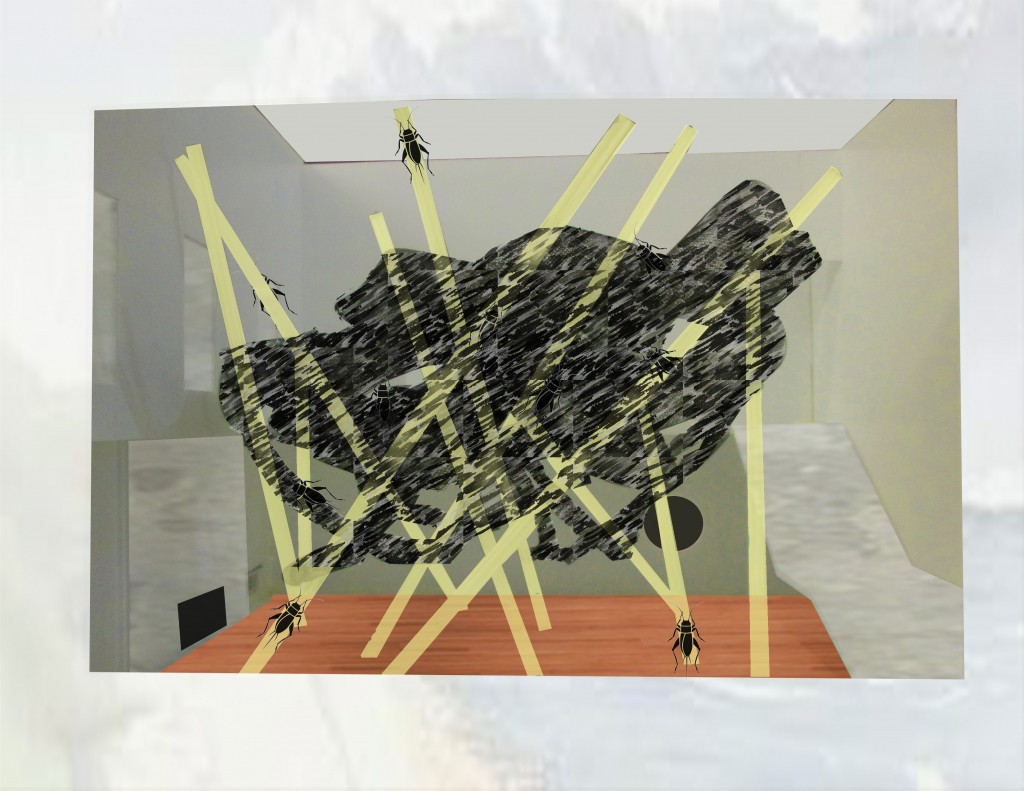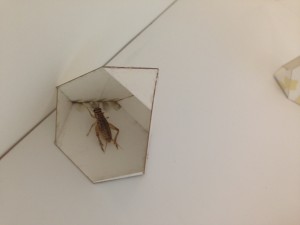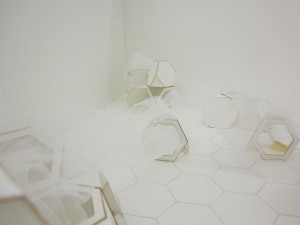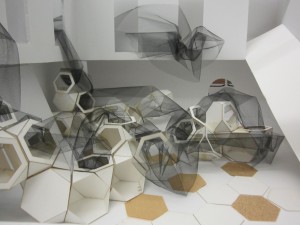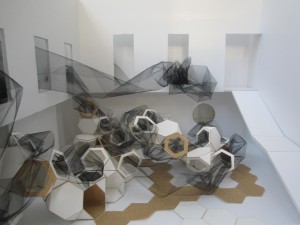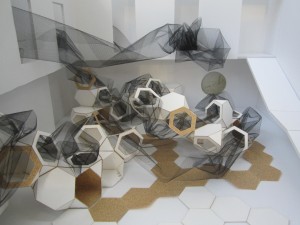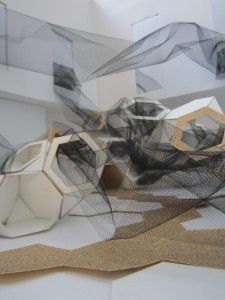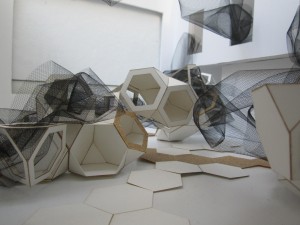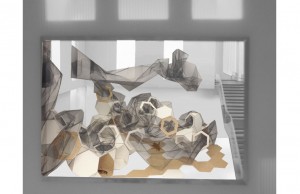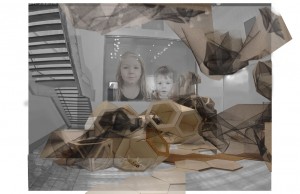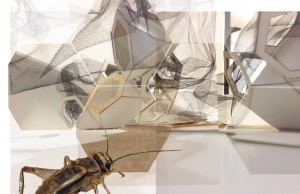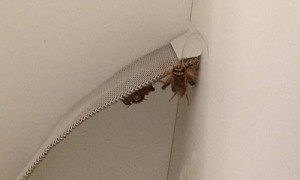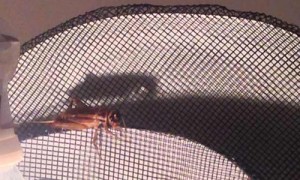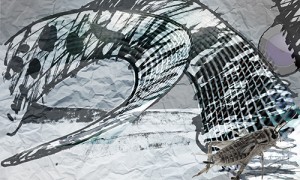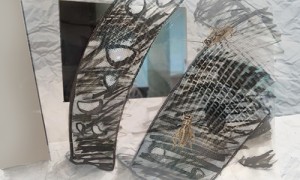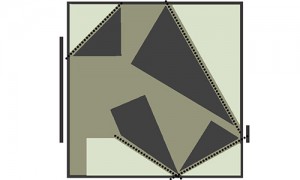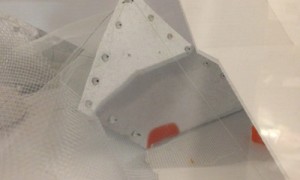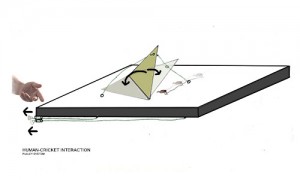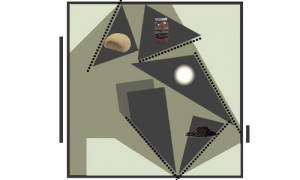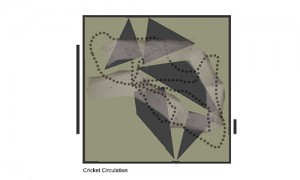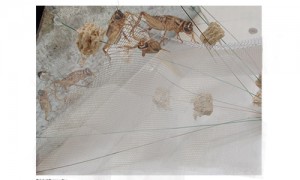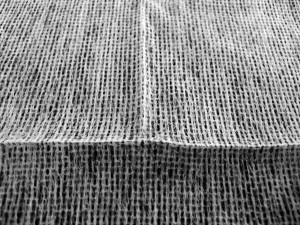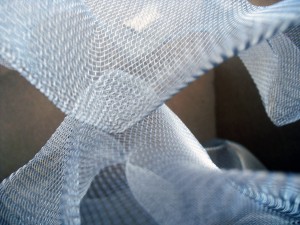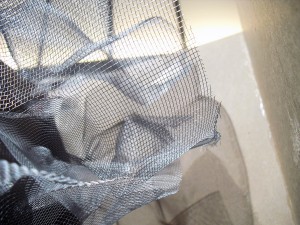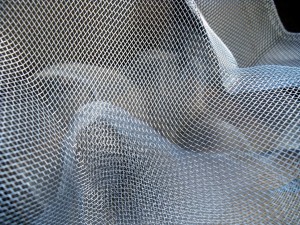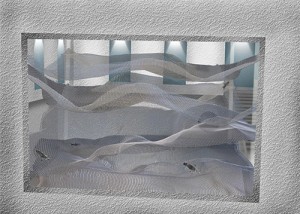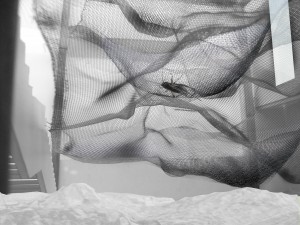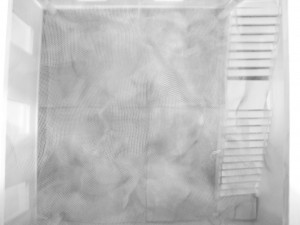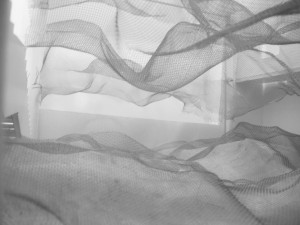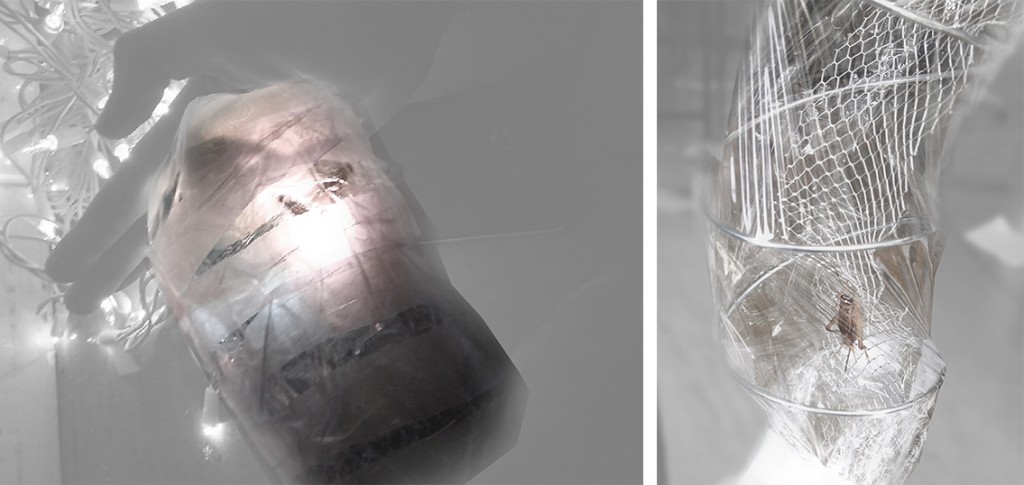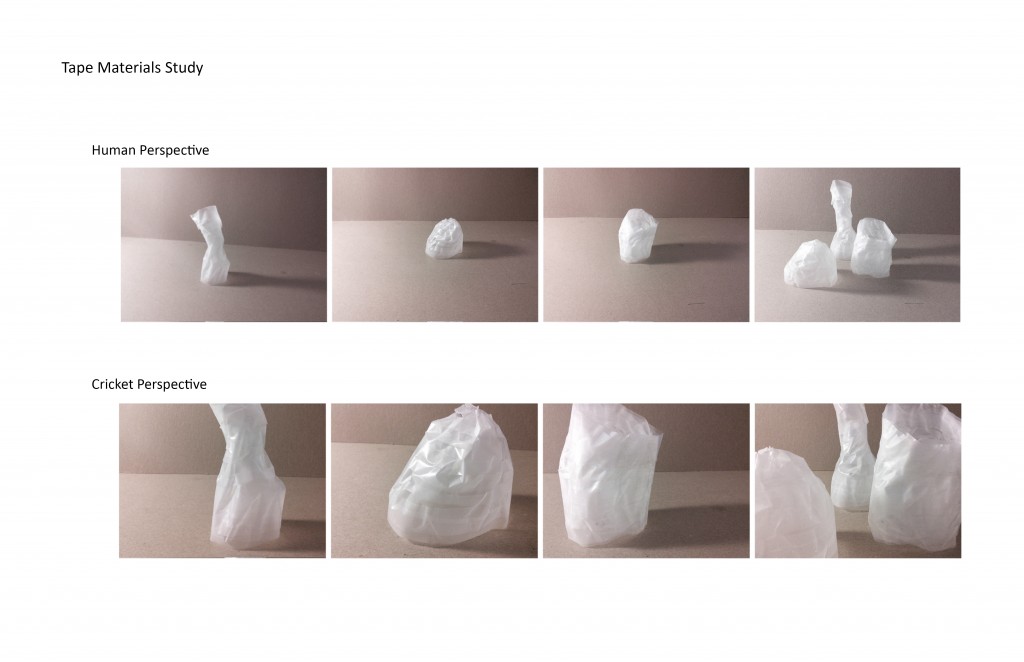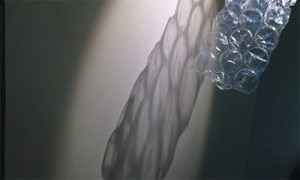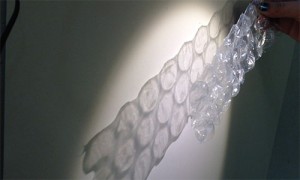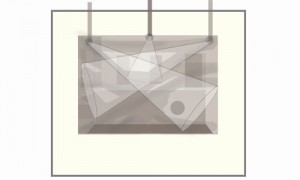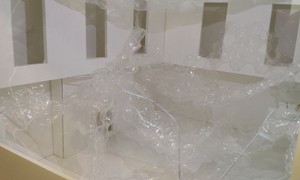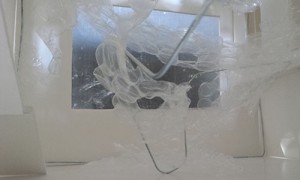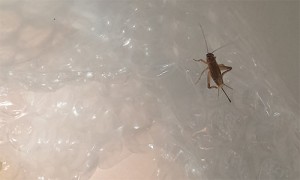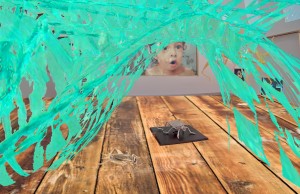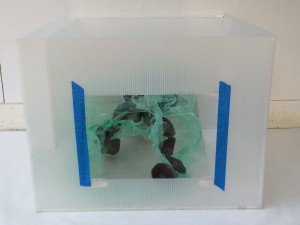The Cricket Cloud
Nevin Lesnoski / Anthony Hodge
The Cricket Cloud is derived from the cricket’s natural notion to want to jump and climb. We first noticed this attribute when we began observing cricket behavior in material studies. It was found that they would rather occupy a higher plane rather than stagnate on the ground. We also observed that the crickets were very drawn to netting. We came to the conclusion that crickets experience space with touch. This is quite different than humans experiencing space with sight. In order to give the crickets a sense of enclosure, we wrapped the netting to create a circulating cloud. The cloud uses four thicknesses of netting to create private, public, and semi-private spaces for the crickets to experience. This encourages cricket interaction while still giving them a sense of privacy. The different spaces allow for the humans to see how crickets behave and what they prefer in a habitat.
The Cricket Cloud is derived of four defferent circulating paths, which occupy an elevated ground plane. The plane creates a canopy in which private, public, and semi-private spaces can be accessed by the cricket’s natural notion to climb and seek enclosure. Crickets experience space through touch; The Cricket Cloud caters to the main characteristics of Archea Domestica.
Observational Studies
Collages
Final Model

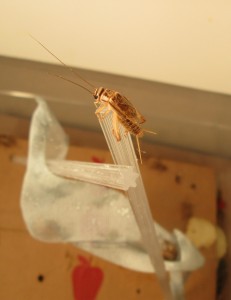
![IMG_0354[1]](https://u.osu.edu/larchsophomorestudio/files/2014/02/IMG_03541-1uchxxg-300x225.jpg)
![Material Study IMG_0415[1]](https://u.osu.edu/larchsophomorestudio/files/2014/02/IMG_04151-2hi696f-300x225.jpg)
